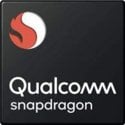MediaTek Helio G80
Qualcomm Snapdragon 680 4G


58 facts in comparison
MediaTek Helio G80 vs Qualcomm Snapdragon 680 4G
Why is MediaTek Helio G80 better than Qualcomm Snapdragon 680 4G?
- 150 MHz faster GPU turbo speed?
950 MHzvs800 MHz - 1W lower TDP?
5Wvs6W
Why is Qualcomm Snapdragon 680 4G better than MediaTek Helio G80?
- 9.46% faster CPU speed?
2 x 2.4 GHz & 6 x 1.9 GHzvs2 x 2 GHz & 6 x 1.8 GHz - 30% faster downloads?
390 MBits/svs300 MBits/s - 6 nm smaller semiconductor size?
6 nmvs12 nm - Has NX bit?
- 1.49 GB/s more memory bandwidth?
14.9 GB/svs13.41 GB/s - 1.5x faster uploads?
150 MBits/svs100 MBits/s
Which are the most popular comparisons?
Price comparison
MediaTek Helio G80
Qualcomm Snapdragon 680 4G
User reviews
Overall rating
Features
Gaming
Performance
General info
Performance
Unknown. Help us by suggesting a value. (MediaTek Helio G80)
Unknown. Help us by suggesting a value. (Qualcomm Snapdragon 680 4G)
Unknown. Help us by suggesting a value. (MediaTek Helio G80)
Unknown. Help us by suggesting a value. (Qualcomm Snapdragon 680 4G)
Memory
Features
Unknown. Help us by suggesting a value. (MediaTek Helio G80)
Unknown. Help us by suggesting a value. (Qualcomm Snapdragon 680 4G)
Unknown. Help us by suggesting a value. (MediaTek Helio G80)
Unknown. Help us by suggesting a value. (Qualcomm Snapdragon 680 4G)
Unknown. Help us by suggesting a value. (MediaTek Helio G80)
Unknown. Help us by suggesting a value. (Qualcomm Snapdragon 680 4G)
Benchmarks
Unknown. Help us by suggesting a value. (MediaTek Helio G80)
Unknown. Help us by suggesting a value. (Qualcomm Snapdragon 680 4G)
Unknown. Help us by suggesting a value. (MediaTek Helio G80)
Unknown. Help us by suggesting a value. (Qualcomm Snapdragon 680 4G)
Unknown. Help us by suggesting a value. (MediaTek Helio G80)
Unknown. Help us by suggesting a value. (Qualcomm Snapdragon 680 4G)
Unknown. Help us by suggesting a value. (MediaTek Helio G80)
Unknown. Help us by suggesting a value. (Qualcomm Snapdragon 680 4G)
Unknown. Help us by suggesting a value. (MediaTek Helio G80)
Unknown. Help us by suggesting a value. (Qualcomm Snapdragon 680 4G)

























Comments
Farras
2 years ago
8 / 10
Mediatek and exynos perform is not so different
Farras
2 years ago
8 / 10
Pros
Cons
Diranta
2 years ago
10 / 10
If you hate this, it means you're not a good person
Diranta
2 years ago
10 / 10
This processor is the best
Pros
Cons
kenji
2 years ago
10 / 10
It's the picture of being not too expensive and good
kenji
2 years ago
10 / 10